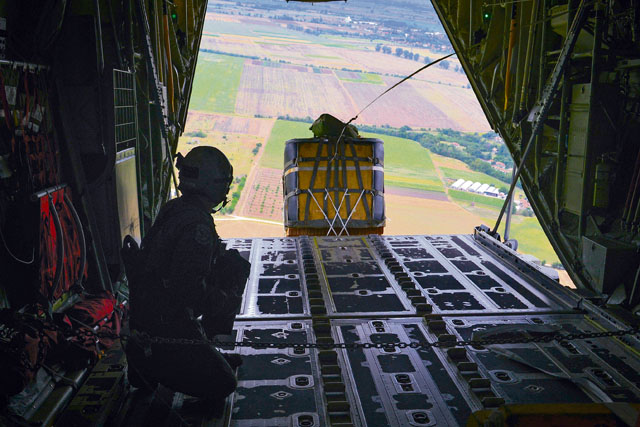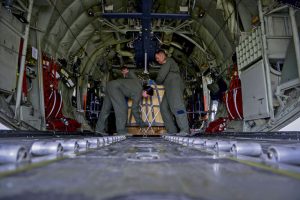
PLOVDIV, Bulgaria — Three U.S. Air Force C-130J Super Hercules aircraft and approximately 70 personnel from the 86th Airlift Wing deployed July 10 to Plovdiv, Bulgaria, to participate in exercise Thracian Summer 2016.
During the two-week forward training deployment, the 37th Airlift Squadron conducted tactical flight training, which included low-level flights, airdrop training with partnered forces and other related training events. The exercises help preserve joint readiness, build interoperability and strengthen relationships with NATO allies.
“It’s an incredible display of the work ethic and drive of our Airmen,” said U.S. Air Force Capt. Christopher Scott, 37 AS pilot. “It is imperative to be able to integrate with multiple agencies within the (European Command) and operate in a moment’s notice with our NATO partners.”
Through strengthened relationships and consistent training exercises with allies and partners, the U.S. demonstrates its shared commitment to a safe and secure Europe. These off-station training events improve interoperability with international partners to ensure units train like they fight when and if called upon to do so in the future.

“This forward training deployment is a tremendous opportunity for our Airmen to hone their operational skills alongside NATO allies in a realistic training environment,” said Lt. Gen. Timothy M. Ray, 3rd Air Force commander. “We train with our Allies and partners every day because you cannot surge trust. You cannot just show up to the championship game without hours on the practice field. Our allies and partners offer unique capabilities, perspective and access to strategic locations.”
Scott explained that this training not only allows partnered nations to gain trust but also practice scenarios they would not normally face.
“Not only does this event provide assurance to our allies in the region, but we’re gaining excellent training in executing our mission with the Bulgarian armed forces,” Scott explained. “Every day, we’re learning from each other in all aspects of combat operations, be it in flight, airborne personnel training or ground support.”
This type of FTD involves many aircrew members as well as many support personnel to keep all parts moving.
“We rely so much on others to help get us out the door and into the air,” said Staff Sgt. Toni Odom, 37 AS loadmaster and Thracian Summer ramp coordinator. “Before aircrews even step, there have been hours of work in place to make everything run smoothly. From the squadron aviation resource management flight, creating our flight authorizations and dealing with last minute changes to aircrew flight equipment inspecting our night vision goggles and helmets and of course maintenance working around the clock to keep the airplanes healthy, it definitely takes a village.”


